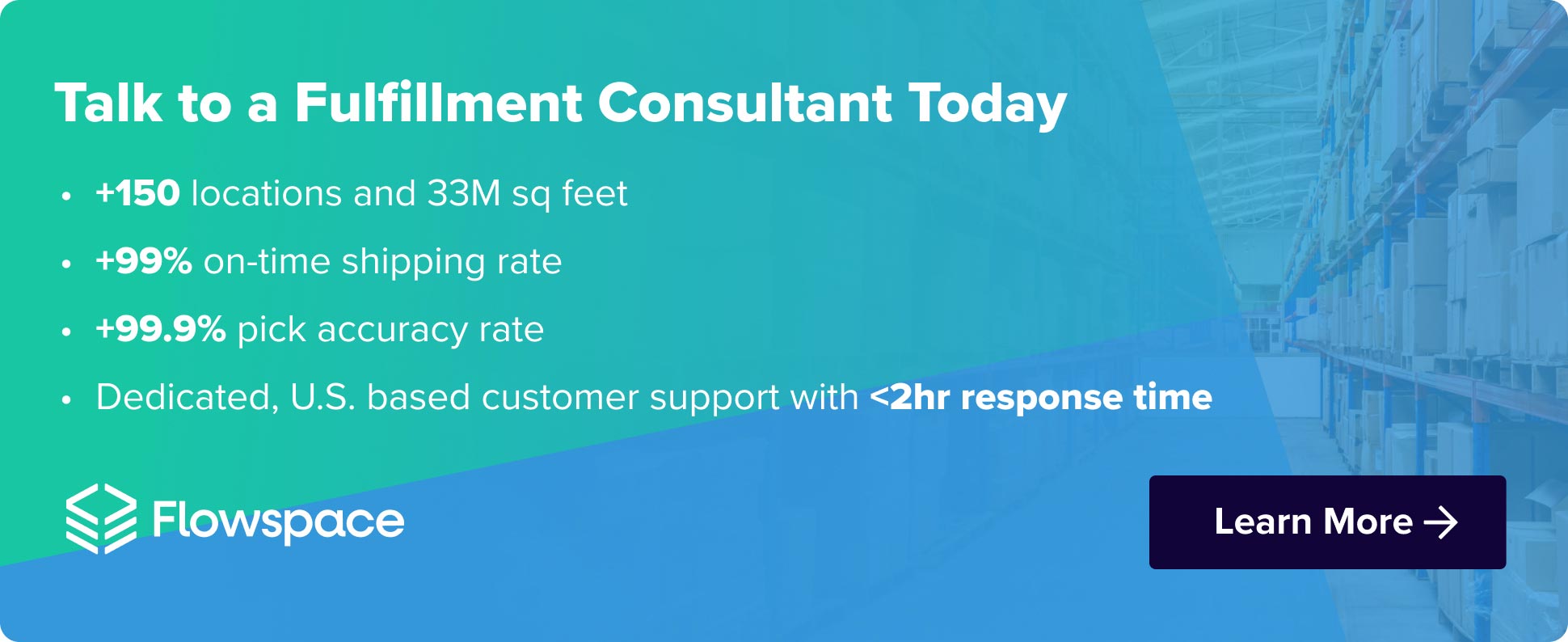
Picture this: a booming online store, sales are soaring, and customers are delighted. But behind the scenes, a silent enemy lurks—inventory glut. Your warehouse space is bursting with unsold products, tying up valuable cash flow, and threatening your profits.
Don’t let inventory glut sabotage your ecommerce success. In this blog, we’ll expose the hidden costs of this common challenge, dive into the root causes, and provide actionable solutions to help you optimize your inventory levels.
What Is Inventory Glut?
Inventory glut is when your ecommerce business holds an excessive amount of stock or surplus inventory that cannot be sold quickly enough. (Think: Halloween costumes in January.) This excess inventory ties up valuable capital, increases storage costs, and can lead to product obsolescence and price reductions.
This surplus inventory can lead to various challenges, including:
- Reduced profitability: Unsold inventory ties up valuable capital, hindering your ability to invest in other areas of your business. This could also cause retailers to miss out on consumer demand as it rises.
- Increased storage costs: Warehousing excess inventory incurs storage fees, impacting your operational expenses.
- Product obsolescence: Products can become outdated or irrelevant over time, leading to potential write-downs and further financial losses.
Understanding the factors contributing to inventory glut is crucial for effective management.
What Causes Inventory Glut?
Several factors can contribute to inventory glut. By understanding the root causes of inventory glut, you can proactively develop strategies to mitigate its impact and ensure your ecommerce business operates efficiently and profitably.
Overproduction and Inaccurate Demand Forecasting
The combination of overproduction and inaccurate demand forecasting is a major contributor to inventory glut. This can happen when production decisions are based on outdated data, overly optimistic projections, or a failure to consider external factors like competitor activity or changing consumer preferences.
Additionally, relying on intuition rather than sophisticated forecasting tools and neglecting to account for lead times and production delays can lead to miscalculations and unnecessary stockpiling.
Seasonality
Certain products experience predictable spikes in demand during specific seasons. (Think: sunscreen at the beginning of summer.) Misjudging these trends can lead to overstocking during peak seasons, leaving you with excess inventory that needs to be discounted or stored for an extended period.
On the other hand, understocking during these periods can lead to missed sales opportunities and frustrated customers. Carefully looking at historical sales data and considering external factors like marketing campaigns and social media trends can help you navigate seasonal fluctuations effectively.
Supply Chain Bottlenecks
Global supply chain disruptions are a constant threat, causing delays and shortages that can disrupt production schedules and lead to unexpected inventory fluctuations and supply chain bottlenecks. The memories of the recent supply chain crisis are still fresh for many ecommerce businesses.
These disruptions can be triggered by trade wars, natural disasters, logistical challenges, labor shortages, or even political instability in regions where raw materials or finished goods are sourced. It’s crucial to stay informed about potential disruptions and diversify your supplier network whenever possible to mitigate their impact.
Changes in Economic Conditions
Unexpected economic shifts can significantly impact consumer demand and therefore consumer spending habits, leaving businesses and retailers with unsold inventory even if their forecasts were accurate.
Factors like economic recessions, changes in interest rates, inflation, and shifts in consumer confidence can all contribute to decreased demand. Staying informed about economic trends and remaining adaptable can help you adjust your inventory levels accordingly and navigate challenging economic landscapes.
Consequences of Inventory Glut
While the inconvenience of overflowing storage space might seem like a minor issue, inventory glut can have significant and far-reaching consequences for your ecommerce business. Let’s delve deeper into some of the key challenges associated with this problem:
Higher Holding Costs
Excess inventory comes with a hefty price tag. Storage space, insurance, and handling costs all contribute to increased holding costs. These additional expenses directly impact your profitability, as you’re paying to store items that are unlikely to ever sell.
As inventory levels rise, so do holding costs, squeezing your profit margins and hindering your ability to reinvest in other areas of your business.
Learn how to manage inventory carrying costs in our blog.
Capital Tie-Up
Inventory glut essentially ties up your capital, the financial resources needed to operate your business. When a significant portion of your capital is locked away in unsold products, it becomes unavailable for other critical investments. This could hinder your ability to:
- Invest in new marketing initiatives to reach a wider audience and grow your customer base.
- Develop innovative new products to stay ahead of the competition and meet evolving customer needs.
- Improve your website or technology infrastructure to enhance the user experience and streamline operations.
Product Obsolescence
Certain products have a limited shelf life or can become outdated due to technological advancements or changing fashion trends. You don’t want to be holding on to an excess amount of product when the market moves on to the next trendy item. When inventory glut happens, the risk of product obsolescence increases. Having poor stock rotation, or holding onto excess stock for extended periods can lead to:
- Reduced product value: Outdated products may need to be sold at a significant discount to clear space, eroding your profit margin.
- Customer dissatisfaction: Customers may be hesitant to purchase outdated products, leading to lost sales and potential negative brand perception.
- Disposal costs: Ultimately, disposing of obsolete inventory can incur additional costs, further impacting your bottom line.
Discounts Eroding Profit Margin
In an attempt to move excess inventory, businesses often resort to heavy discounts and promotions. While these strategies might help free up storage space and generate some sales, they can significantly erode your profit margin.
Selling products at a significant discount reduces your per-unit profit, ultimately impacting your overall profitability. While running a discount seems like a great way to offload products quickly, relying heavily on discounts (or often discounts too often) can train customers to expect lower prices, making it difficult to maintain healthy profit margins in the long run.
How to Deal with Inventory Glut
Inventory glut, though a common challenge, doesn’t have to be a permanent burden. By implementing proactive inventory management techniques and partnering with the right solutions provider, you can effectively manage inventory levels and ensure the smooth operation of your ecommerce business.
Inventory Management Practices
The foundation of preventing and mitigating inventory glut lies in implementing sound inventory management practices. This involves:
- Accurate Forecasting: Use data-driven forecasting methods to predict future demand accurately. Consider factors like historical sales data, seasonality trends, and marketing campaigns to gain a comprehensive understanding of customer needs.
- Regular Inventory Audits: Conduct regular inventory audits to ensure physical stock levels match system records. This helps identify discrepancies and discrepancies and prevent inaccuracies impacting inventory decisions.
- Safety Stock Optimization: Maintain an optimal level of safety stock to guard against unexpected demand spikes or supply chain disruptions. However, avoid overstocking safety stock, as it can also contribute to inventory glut.
- Implementing Inventory Management Strategies: Consider adopting inventory management strategies like First-In, First-Out (FIFO) and Just-in-Time (JIT). FIFO ensures that older inventory is sold first, minimizing the risk of obsolescence. JIT focuses on receiving stock only when needed, reducing storage costs and preventing excessive holding of inventory.
By adhering to these practices, you can gain greater control over your inventory levels and minimize the risk of encountering inventory glut.
Technological Solutions
Technology plays a crucial role in streamlining inventory management and enhancing decision-making. Consider using inventory management software that provides:
- Real-time Inventory Tracking: Gain real-time inventory visibility into your levels across all locations, allowing you to make informed decisions about restocking and distribution.
- Demand Forecasting Tools: Use sophisticated forecasting tools that incorporate various data points to predict future demand with greater accuracy.
- Data-Driven Insights: Leverage data analytics capabilities embedded in the software to identify trends, optimize stock levels, and make data-driven decisions to avoid overstocking.
By integrating technology into your inventory management processes, you gain greater control and efficiency, reducing the likelihood of inventory glut.
Creative Sales Strategies
In instances where you encounter existing inventory glut, explore creative sales strategies to move excess stock without sacrificing long-term profitability:
- Flash Sales: Use strategically timed flash sales to offer deep discounts on specific products, generating quick sales and clearing excess inventory.
- Subscription Models: Consider offering subscription models for certain products, spreading out revenue generation and potentially reducing the risk of overstocking. Learn more about subscription box fulfillment in our blog.
- Partnerships: Collaborate with other businesses or influencers to offer bundled product deals or promotions, leveraging their audience to move excess inventory and enhance brand exposure.
By implementing a combination of these strategies, you can effectively address inventory glut while maintaining customer satisfaction and protecting your profit margins.
How Flowspace Can Help
Flowspace is a comprehensive ecommerce logistics and fulfillment solution provider dedicated to empowering businesses like yours to conquer inventory glut and achieve sustainable growth. We offer a suite of integrated solutions designed to streamline your operations and optimize your inventory management.
Flowspace empowers you to:
- Real-time Inventory Visibility: Gain complete transparency into your inventory levels across all fulfillment centers, allowing you to make informed decisions about restocking, distribution, and potential promotions.
- Data-Driven Demand Forecasting: Leverage our advanced forecasting tools that analyze historical data, seasonal trends, and market insights to predict future demand with greater accuracy, minimizing the risk of overstocking or understocking.
- Strategic Fulfillment Network: Use our nationwide network of strategically located fulfillment centers to optimize delivery time and reduce shipping costs, while ensuring your products are readily available to meet customer demand.
- Expertise and Support: Benefit from our team of dedicated inventory management specialists who provide ongoing guidance, support, and insights to help you implement effective strategies and overcome inventory challenges.
Get in touch today to find out how Flowspace can help you conquer inventory glut.







